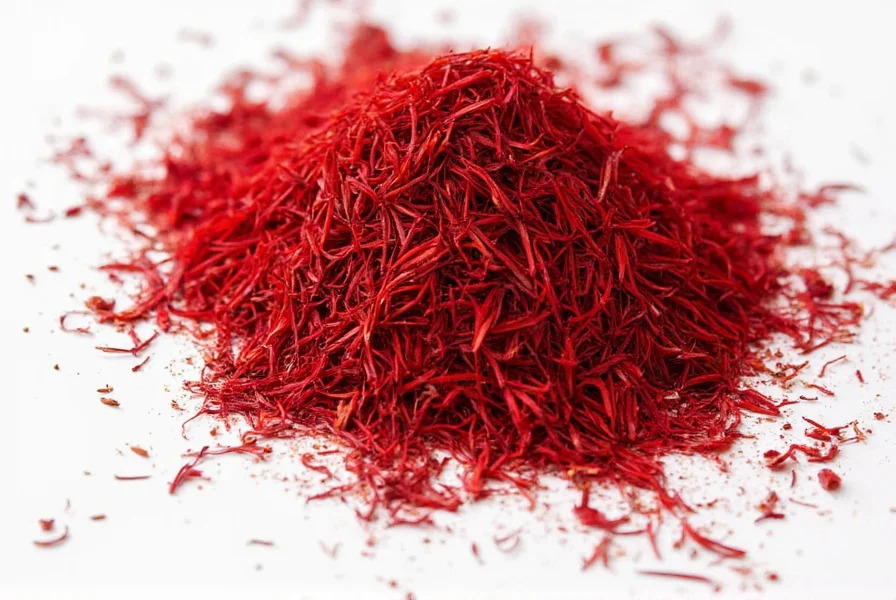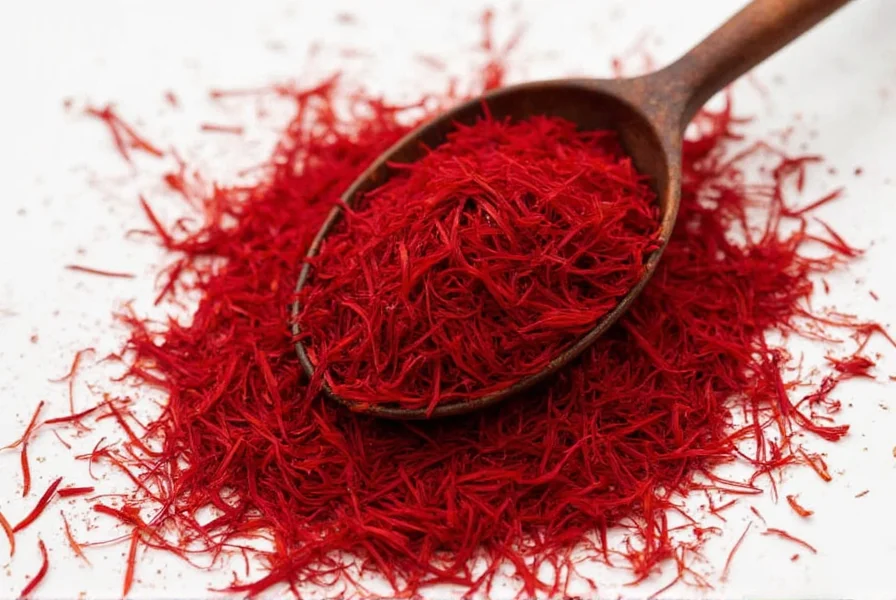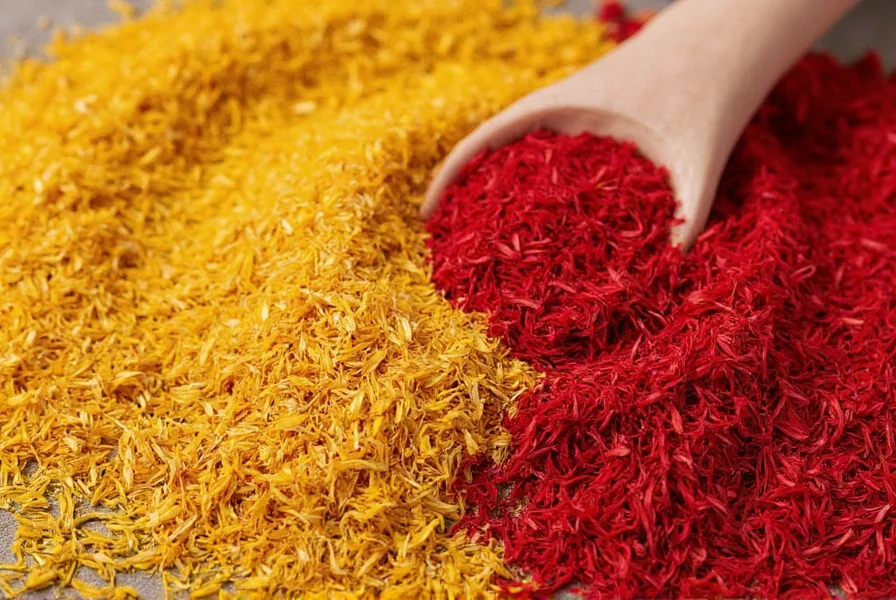When you need a substitute for saffron, understanding which alternative works best for your specific culinary application is crucial. Saffron, the world's most expensive spice by weight, often requires replacement due to its prohibitive cost or unavailability. This comprehensive guide examines the top alternatives that deliver either the characteristic golden color, distinctive flavor, or both elements that make saffron so prized in global cuisines.
Why Saffron Substitutes Matter
Saffron's extraordinary price—often exceeding $5,000 per pound—makes it impractical for regular use in most households. Each saffron thread comes from the delicate stigma of the Crocus sativus flower, requiring approximately 75,000 flowers to produce just one pound of the spice. This labor-intensive harvesting process explains why home cooks and professional chefs alike seek viable saffron alternatives that maintain dish integrity without breaking the bank.
Top 5 Saffron Substitutes Ranked

1. Turmeric: The Color Champion
Turmeric provides the closest visual match to saffron's vibrant yellow hue, making it the go-to substitute when appearance matters most. This ground spice from the Curcuma longa plant delivers intense color with just 1/4 to 1/2 teaspoon replacing one saffron thread. While turmeric lacks saffron's floral notes, its earthy flavor works well in rice dishes, soups, and stews where saffron's taste would be subtle anyway. For best saffron substitute for color, turmeric is unmatched in accessibility and effectiveness.
2. Safflower: The Flavor Mimic
Safflower petals (Carthamus tinctorius) offer the most similar flavor profile to genuine saffron, with a mild, slightly sweet taste and comparable floral notes. Often sold as "Mexican saffron" or "bastard saffron," these pale yellow petals provide moderate coloring power. Use 1 teaspoon of safflower petals to replace 15-20 saffron threads. This represents an excellent affordable saffron alternative for paella and other Mediterranean dishes where flavor authenticity matters more than intense color.
3. Paprika: The Flavor Enhancer
For dishes requiring both color and richer flavor notes, high-quality sweet paprika serves as a versatile substitute. While it produces a slightly orange-red tint rather than pure yellow, paprika delivers complex earthy flavors that complement saffron's profile. Use 1/2 teaspoon paprika per 15 saffron threads. This makes it the preferred saffron replacement for Spanish recipes where deeper flavor notes enhance the dish.
4. Annatto: The Specialty Option
Annatto seeds (achiote) provide vibrant color with minimal flavor impact, making them ideal for dishes where saffron's primary role is visual. Soak 1/2 teaspoon of seeds in hot water for 10 minutes, then use the infused liquid. This natural saffron substitute for risotto works particularly well in creamy dishes where the subtle peppery notes of annatto won't interfere with other flavors.
5. Marigold Petals: The Gourmet Choice
Dried calendula (marigold) petals offer the most authentic flavor substitute among affordable options, with floral notes reminiscent of true saffron. Use 1 teaspoon dried petals per 15 saffron threads. While less common in grocery stores, this artisan saffron alternative for gourmet cooking appears in specialty markets and provides the closest overall experience for discerning palates.
| Substitute | Color Match | Flavor Match | Substitution Ratio | Best For |
|---|---|---|---|---|
| Turmeric | ★★★★★ | ★☆☆☆☆ | 1/4 tsp = 1 thread | Rice dishes, soups, mild sauces |
| Safflower | ★★★☆☆ | ★★★☆☆ | 1 tsp = 15 threads | Paella, bouillabaisse, Mediterranean dishes |
| Paprika | ★★★☆☆ | ★★★★☆ | 1/2 tsp = 15 threads | Spanish recipes, stews, roasted meats |
| Annatto | ★★★★☆ | ★☆☆☆☆ | 1/2 tsp seeds = 15 threads | Risotto, creamy sauces, cheese coloring |
| Marigold Petals | ★★★☆☆ | ★★★★☆ | 1 tsp = 15 threads | Gourmet dishes, delicate sauces, specialty recipes |
How to Use Saffron Substitutes Effectively
Successful substitution requires understanding which aspect of saffron matters most for your specific recipe. For best results with saffron alternatives, consider these professional techniques:
- For color-focused dishes: Steep turmeric or annatto in warm liquid for 10-15 minutes before adding to your recipe. This maximizes color extraction while minimizing any potential bitterness.
- For flavor-focused applications: Bloom safflower or marigold petals in a small amount of warm broth or oil for 5 minutes before incorporating into your dish.
- For balanced substitution: Combine 1/4 teaspoon turmeric with 1/8 teaspoon paprika to approximate both color and flavor elements of saffron.
- When substituting in delicate dishes: Start with half the recommended amount and adjust to taste, as some substitutes can overpower subtle flavors.
When Not to Substitute Saffron
Certain traditional dishes require authentic saffron for proper flavor development. The authentic saffron recipes that shouldn't be substituted include:
- Traditional Spanish paella (where saffron's specific floral notes define the dish)
- Persian jeweled rice (where saffron's aroma is integral to the celebratory nature)
- Swedish saffron buns (lussekatter) for St. Lucia's Day
- French bouillabaisse (where saffron's unique flavor profile is protected by culinary tradition)
For these specialty dishes, consider purchasing a small amount of genuine saffron rather than substituting. Many specialty spice retailers sell saffron in 0.1-gram increments specifically for occasional use in traditional recipes.

Maximizing Your Saffron Investment
If you occasionally use real saffron, maximize its value with these professional techniques:
- Grind threads with sugar: Crush 3-4 threads with 1 teaspoon of sugar before adding to liquid for better dispersion
- Steep in warm liquid: Use 2-3 threads per cup of warm (not boiling) liquid for 15-20 minutes before adding to recipes
- Store properly: Keep saffron in an airtight container away from light and moisture; properly stored, it maintains quality for 2-3 years
- Buy small quantities: Purchase from reputable spice merchants who sell in 0.1-gram increments for occasional use
Frequently Asked Questions
What's the closest substitute for saffron that provides both color and flavor?
Safflower petals offer the best balance of color and flavor similarity to saffron. While turmeric provides superior color, safflower delivers mild floral notes that more closely resemble saffron's distinctive taste profile. For the most authentic experience, use 1 teaspoon of safflower petals steeped in warm liquid to replace 15 saffron threads.
Can I use turmeric as a saffron substitute in all recipes?
Turmeric works well as a saffron substitute in most savory dishes where color matters more than precise flavor, such as rice dishes, soups, and mild sauces. However, avoid using turmeric in delicate dishes like seafood paella or saffron buns where saffron's specific floral notes are essential to the recipe's character.
How much turmeric equals one saffron thread?
Use approximately 1/8 to 1/4 teaspoon of turmeric powder to replace one saffron thread. For most recipes calling for 15-20 threads, 1/2 to 1 teaspoon of turmeric provides equivalent coloring power. Remember that turmeric has a stronger earthy flavor than saffron, so start with less and adjust to taste.
Does paprika make a good saffron substitute?
High-quality sweet paprika serves as an excellent flavor substitute for saffron, particularly in Spanish and Mediterranean dishes. While it produces a slightly orange-red tint rather than pure yellow, paprika delivers complex earthy flavors that complement saffron's profile. Use 1/2 teaspoon of sweet paprika to replace 15 saffron threads for the best results in paella and similar dishes.
Can I combine substitutes for better saffron replacement?
Yes, combining substitutes often yields superior results. For balanced color and flavor, mix 1/4 teaspoon turmeric with 1/8 teaspoon sweet paprika to replace 15 saffron threads. Alternatively, steep safflower petals in turmeric-infused liquid for enhanced color and more authentic flavor profile. This approach creates the most comprehensive homemade saffron substitute for everyday cooking.











 浙公网安备
33010002000092号
浙公网安备
33010002000092号 浙B2-20120091-4
浙B2-20120091-4